|
|
The Battle for the Tin Mines
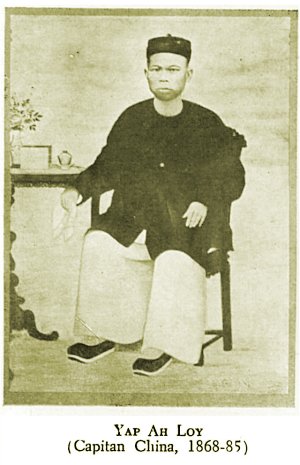 With the battle lines now drawn between Tunku Kudin and
Raja Mahadi, it was only a matter of time before the rival Malay chiefs
sought alliances with the leaders of the various Chinese factions to
gain control of key tin-mining areas. The most notable of these leaders
was Yap Ah Loy, who had only recently been appointed the new Kapitan
Cina following the death of Liu Ngim Kong in 1868. He took the side of
the Tengku Kudin, and tried to maintain some kind of order among the
various Chinese clans. There had already been bitter rivalry among the
various Chinese clans for control of the tin mining fields even before
the war among the Malay chiefs and the situation could only get worse.
The two largest Chinese factions were the the Hai San (based in Kuala
Lumpur) and the Ghee Hin (based in the Kanching and Rawang area) and
they would eventually join opposing sides in the civil war, with the
Ghee Hin siding with Raja Mahadi, and the Hai San with Yap Ah Loy
siding with Tengku Kudin. With the battle lines now drawn between Tunku Kudin and
Raja Mahadi, it was only a matter of time before the rival Malay chiefs
sought alliances with the leaders of the various Chinese factions to
gain control of key tin-mining areas. The most notable of these leaders
was Yap Ah Loy, who had only recently been appointed the new Kapitan
Cina following the death of Liu Ngim Kong in 1868. He took the side of
the Tengku Kudin, and tried to maintain some kind of order among the
various Chinese clans. There had already been bitter rivalry among the
various Chinese clans for control of the tin mining fields even before
the war among the Malay chiefs and the situation could only get worse.
The two largest Chinese factions were the the Hai San (based in Kuala
Lumpur) and the Ghee Hin (based in the Kanching and Rawang area) and
they would eventually join opposing sides in the civil war, with the
Ghee Hin siding with Raja Mahadi, and the Hai San with Yap Ah Loy
siding with Tengku Kudin.
The headman at the Kanching mines was Yap Ah Sze, an ally of Yap Ah
Loy's. However, Ah Sze was suddenly murdered and it was suspected that
this was on the orders of Chong Chong, another Hakka headman. Yap Ah
Loy sent a force to Kanching - ostensibly to collect a debt owed to the
Malay chiefs - Raja Asal and Sutan Puasa. However it is more likely
this was intended as a show of armed strength to bring Chong Chong to
heel. The force sent to Kanching consisted of 200 Malays led by Raja
Asal and Sutan Puasa, with another 400 of Yap Ah Loy's Chinese, who
were held in the rear as a reserve, in case they were needed. Raja Asal
and Sutan Puasa marched into the settlement and demanded the tin ore
owed to them. When they were told that no tin had been taken from the
mines, they ordered their men to fire their guns and muskets on the
settlement. On hearing the cannon fire, Yap Ah Loy's Chinese in the
rear marched to join the fight and a massacre ensued. 136 of the
Kanching miners were killed, for the loss of 12 Chinese and 3 Malays.
The so-called Kanching Massacre gave Yap Ah Loy complete control of the
Kanching mines, while Chong Chong fled to Rawang nearby and pledged his
allegiance to Raja Mahadi's forces. It was at this point that he met
and befriended 'Che Soho' - the redoubtable warrior Syed Mashhor - and
the two plotted an attack on their enemies. Syed Mashhor had gathered
an army in Ulu Selangor numbering about 400 men and marched south to
Ulu Klang, where he built his stockades. Chong Chong, in the meantime,
proceeded to Batu Ampat, just west of the confluence of the Klang and
Ampang rivers, and just four miles away from Yap Ah Loy's camp in Kuala
Lumpur. In time, a few thousand more local men joined Chong Chong's and
Syed Mashhor's forces, bring their total force to over 2,500men. Yap Ah
Loy's forces, together with Raja Asal's and Sutan Puasa's, were rather
fewer, at about 2,000 men.
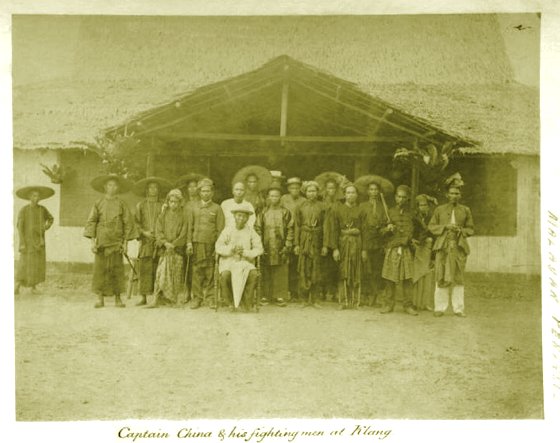
The main mass of Chong Chong's men were concentrated in
stockades near Kg Dato' Keramat, while Syed Mashhor's force were in
stockades further east in Ulu Klang, protecting Chong Chong's stockade
from any flanking attacks from the north and to support his right flank
when he advanced. The camps built by Chong Chong and Syed Mashhor were
protected by stout stockades built of the trunks of saplings held in
place by rattan lashings. The walls were surmounted by spikes of
sharpened bamboo and were further strengthened on the outside by a
palisade of banana stems, placed there to prevent the passage of
musketshot. Beyond the walls were lines of defensive pits, dug to cover
all the possible approaches to the stockade. These were filled with
more sharpened bamboo spikes.
The fighting men were usually dressed in coarse cotton cloths, with
their feet in straw sandals. They generally carried capes of dried palm
leaves slung over one shoulder in case of heavy rain. Some of them were
armed with long swords, and others armed with muskets or primitive
guns, with a pouch for the powder hanging at their wrists. The
commonest weapon was a dagger tucked into their waist belt. Many had
dried skins strapped to their chests to act as breastplates or carried
wooden shields. Some wore split coconut shells as helmets to ward off
blows to the head.
As soon as Yap Ah Loy learnt that Chong Chong was massing his forces at
Ampang, he dispatched a force of 600 men to Ulu Klang, with the aim of
threatening Chong Chong's right flank and cutting off any line of
retreat. The force made contact with Syed Mashhor's stockade at Ulu
Klang and launched an attack on it at about 10 in the morning. By the
late afternoon, Syed Mashhor's men were routed, with the loss of over
100 killed. Yap Ah Loy's losses were 5 killed and 20 wounded.
Bukit Dinding, north of Taman Setiawangsa, as seen from Ulu Klang. Syed
Mashhor's men withdrew from Ulu Klang to Chong Chong's stockade at
Ampang. They decided to launch an immediate counter-attack before Yap
Ah Loy's men could consolidate their position. As night fell, Syed
Mashhor and 1,000 men marched from Ampang directly to Ulu Klang, south
of Bukit Dinding (on the left of this picture), while Chong Chong led
another 1,000 men through a longer route west and then north of the
hill towards Ulu Klang, through what is today Wangsa Maju.
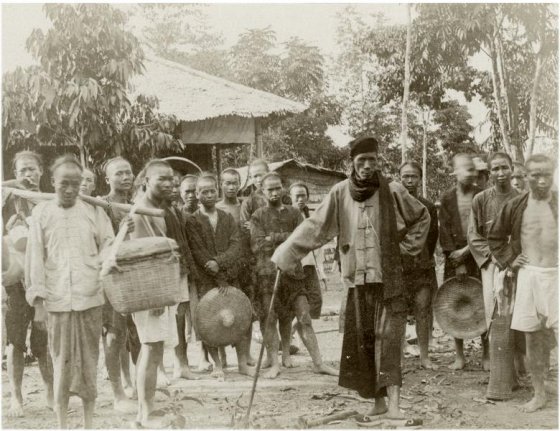
Later that night, Yap Ah Loy's men at Ulu Klang were awakened
by the sound of gunfire and shouting, and discovered Syed Mashhor's men
advancing uphill on their position. They launched an immediate attack
on Syed Mashhor's men. However, some time later, they suddenly found
themselves attacked in their rear by Ching Chong's men who had just
arrived and found themselves trapped between the two attacking forces.
Fortunately, Yap Ah Loy had sent 400 men to Ulu Klang as reinforcement
for the captured Ulu Klang stockades and these men arrived in the rear
of Chong Chong's encircling force. After many hours of confused
fighting, Yap Ah Loy's forces had suffered over 40 killed and 100
wounded but they managed to force Chong Chong and Syed Mashhor to
retreat back to their stockade at Ampang.
The next day, Raja Asal sent a force of Malays from Damansara to help
reinforce Yap Ah Loy's forces in Ulu Klang, These were later joined by
400 Malays under Sutan Puasa. Another 500 Chinese were sent up the
Ampang Road to attack Chong Chong's stockade at Ampang, with another
300 held back in reserve. Yap Ah Loy's forces on the Ampang Road opened
their attack on Chong Chong's stockade at 10 am and, by the afternoon,
they were joined by Raja Asal's and Sutan Puasa's Malays from Ulu
Klang. Chong Chong had by now lost over 500 men and he was being
attacked on two flanks. By nightfall, Chong Chong and Syed Mashhir
ordered a retreat northwest through Setapak and onto Ulu Selangor. Yap
Ah Loy's forces lost an estimated 30 killed and 100 wounded. Chinese
sources record that "the dead bodies of men and horses lay in piles in
the waste, and blood was flowing like streams."
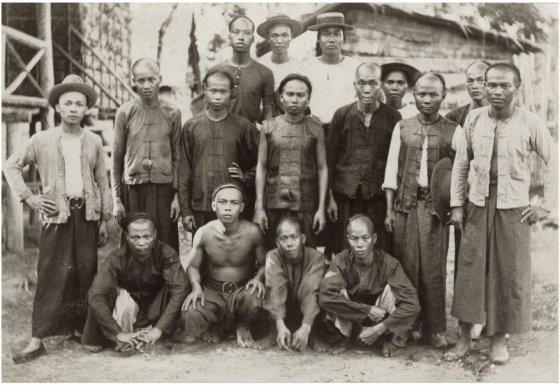
After their defeat at Ampang in October 1870, Chong Chong and
Syed Mashhor wasted little time in gathering more troops in Ulu
Selangor - about 1,000 Malays and the same number of Chinese. In June
1871, they began an advance south towards Kuala Lumpur. The northern
approach to the town was defended by a camp of about 500 men under Yap
Voon Lung in Rawang. Syed Mashhor's forces were the first to make
contact with Yap's foces and by the time Chong Chong's forces arrived
at noon, Yap was forced to retreat to a second defensive line in his
rear. He managed to hold this position when night fell, suffering
losses of 40 killed and 40 wounded.
Yap Ah Loy had by this time received word of the attack and sent
reinforcements of 500 men to assist Yap Voon Lung. He also had a plan.
Yap Voon Lung was ordered to attack Mashhor's forces and then, after a
short struggle, feign defeat and retreat rapidly. Mashhor's men
followed in hot pursuit. However, 200 men from the reinforcing force
then suddenly emerged from their hiding places and attacked the Malays
in their rear. Yap Voon Lung's force turned around and began to attack
again - trapping Syed Mashhor's men between two fields of fire. The
remaining 300 men of the reinforcing force, in the meantime, attacked
Chong Chong's men, keeping them trapped in their encampment. Syed
Mashhor and Chong Chong had to yet again admit defeat and, suffering
heavy losses, fled back to their bases in Ulu Selangor.
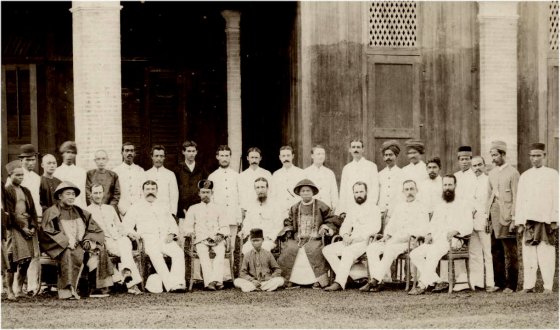
Encouraged by their victory in Rawang, Tunku Kudin and Yap Ah
Loy hatched a plan to quickly destroy Syed Mashhor's forces it could
again reach dangerous proportions. In August 1871, Yap Ah Loy sent 500
Chinese north towards Ulu Selangor, while Tunku Kudin sent about 500
men to Rawang to support him. ap Ah Loy's forces, under the command of
Chung Piang, encamped at Ulu Yam and sent a small force towards Kuala
Kubu to make contact with Syed Mashhor and draw him out of his
stronghold. The advance force attacked Syed Mashhor's stockades and,
after a fierce engagement, were driven back and had to retreat back to
their camp at Ulu Yam. Chung Piang then moved his whole army forward
towards Kuala Kubu but, this time, Syed Mashhor was well-prepared and
dug-in. Chung Piang launched probing attacks on his stockade in order
to lure Syed Mashhor out of his fortified position and come out into
the open. However, Syed Mashhor was content defend his very strong
position and Chung Piang was compelled to retreat back to his camp at
Ulu Yam.
A further assault was made on Syed Mashhor's Kuala Kubu stockade, this
time by a combined force of 1000 Chinese under Chung Piang and 1000
Malays under Raja Asal. Setting out from their camps in Ulu Yam, they
were both beaten back from Kuala Kubu, with the loss of 88 Chinese and
51 Malays killed, and many men wounded. They retreated past their base
camp at Ulu Yam and all the way to Rawang that night. However, unknown
to Tunku Kudin and Yap Ah Loy, Raja Asal was at this time already
contemplating switching sides to the Raja Mahdi camp. This betrayal was
to have disastrous consequences for them as the war approached its next
stage in the coming months - an all-out assault on Kuala Lumpur itself.
For more images, see www.facebook.com/media/set/?set=a.10154808080332988
Write to the author: sabrizain@malaya.org.uk
The
Sejarah Melayu
website is
maintained solely by myself and does not receive any funding
support from any governmental, academic, corporate or other
organizations. If you have found the Sejarah Melayu website useful, any
financial contribution you can make, no matter how small, will be
deeply appreciated and assist greatly in the continued maintenance of
this site.
|
|

